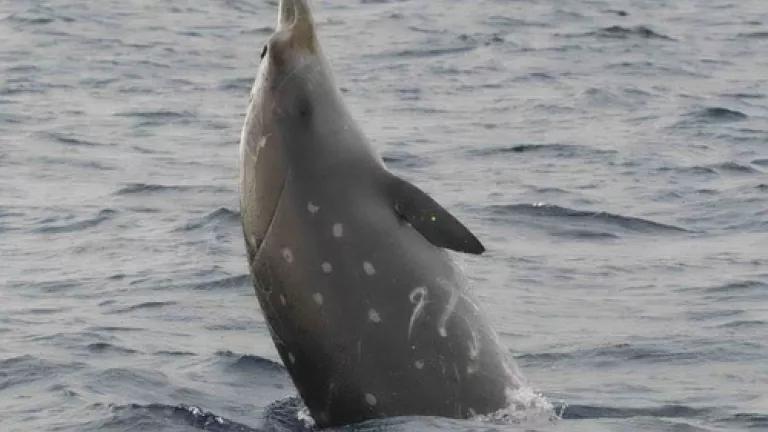
Almost a year to the day after a mass stranding of beaked whales in Crete, Greece, a very similar story is unfolding in Guam. Last year, my colleague Michael reported on a mass stranding of beaked whales along the southern coast of Crete, coincident with the U.S. and other navies playing war games offshore. There, somewhere between five and eight whales beached and biologists quickly determined that the navies' high-intensity sonar was the likely cause. Now, there's news of more beaked whale strandings on the other side of the world. The Navy has just admitted it was using sonar during an international "Multi-Sail" exercise on its Marianas Island range shortly before the latest standings occurred.
There are good reasons to suspect sonar in this case as well. Beaked whales are deep-diving species that are rarely seen near shore; naval sonar, or military exercises more generically, are associated with virtually every significant mass stranding of beaked whales on record. Whales recovered in time for investigation have shown suffering from a suite of severe, tell-tale pathologies, similar to those seen in decompression sickness, or the bends: bleeding around the brain, lesions in organ tissue, and damage to the acoustic fats, a mass of tissue along a whale's jawline that helps conduct sound to the ears. Sonar is believed to kill them, in some cases, by fatally disrupting their dive patterns in ways they cannot endure.
The whales that reach the shore are considered just a fraction of those actually harmed. So, investigators will be looking for these signs to see if this could be the latest in a long line of whale strandings associated with naval training.
In recent years, the Navy has ramped up activities in the Marianas Islands, which could be having a significant impact on the area's beaked whale populations. At least three other regions (Greece, the northern Bahamas, and the Navy's AUTEC range in the southern Bahamas) show evidence of serious population-level harm from naval activities, and government biologists are concerned that the Navy may have turned Southern California into a "population sink" for these species, which are in dramatic decline off the west coast.
Nonetheless, the Navy and the National Marine Fisheries Service - the agency charged with protecting marine mammals from harmful activities, like Navy war games - have not put even one square inch of the Marianas Islands off-limits to protect these species. That's what the Fisheries Service has acknowledged to be the most effective available means of protecting marine mammals from Navy activities, and it's what the Commonwealth of the Northern Marianas Islands has demanded. And it's what is simply necessary given the Navy's massive ramp-up in training activity off the islands.
Unfortunately, when it comes to the Navy and the Fisheries Service, that's par for the course. The Navy consistently downplays harms and obfuscates scientific studies demonstrating the link between adverse impacts and its activities; and the Fisheries Service, too afraid to disturb its relationship with a vastly more powerful agency, goes along for the ride.

